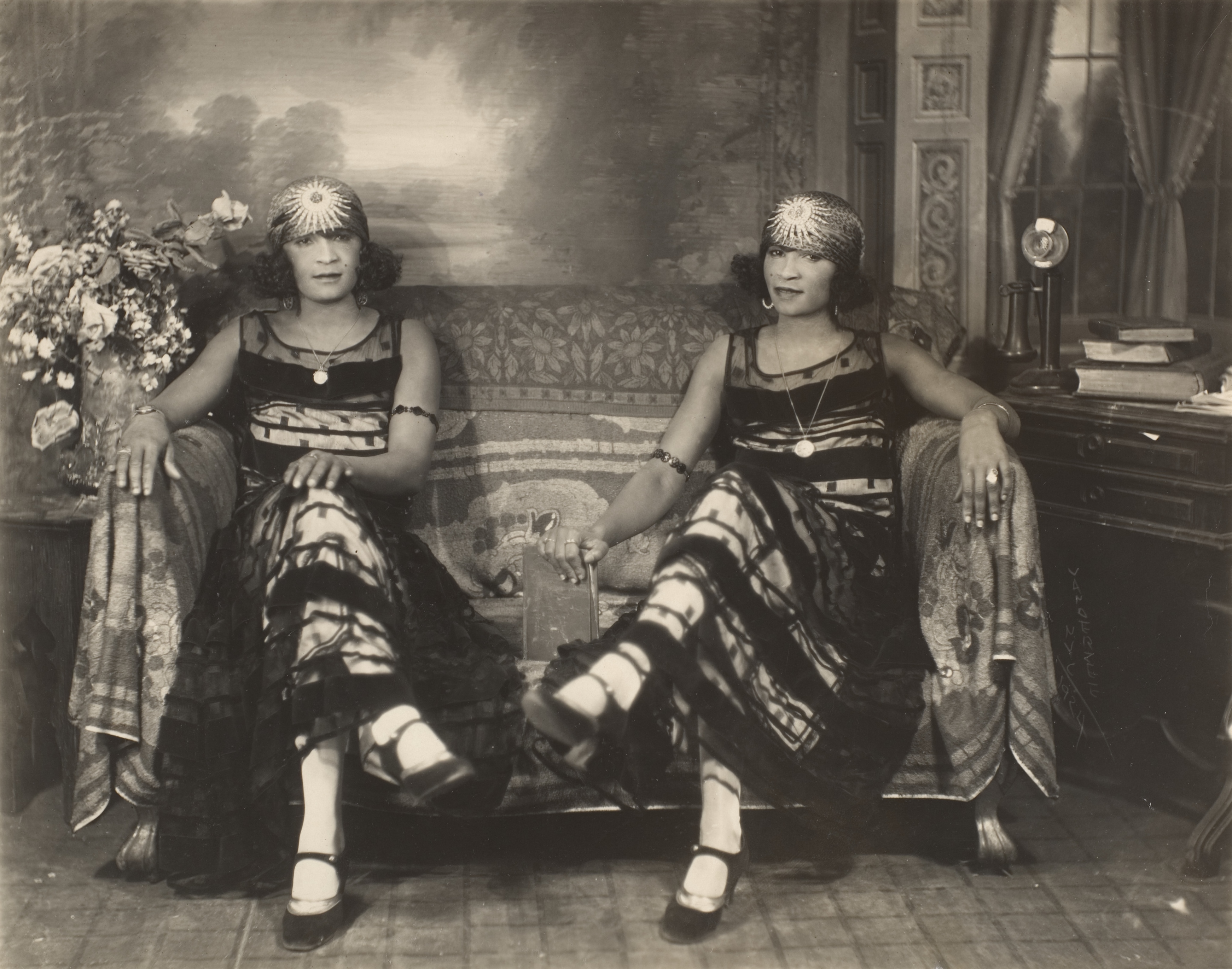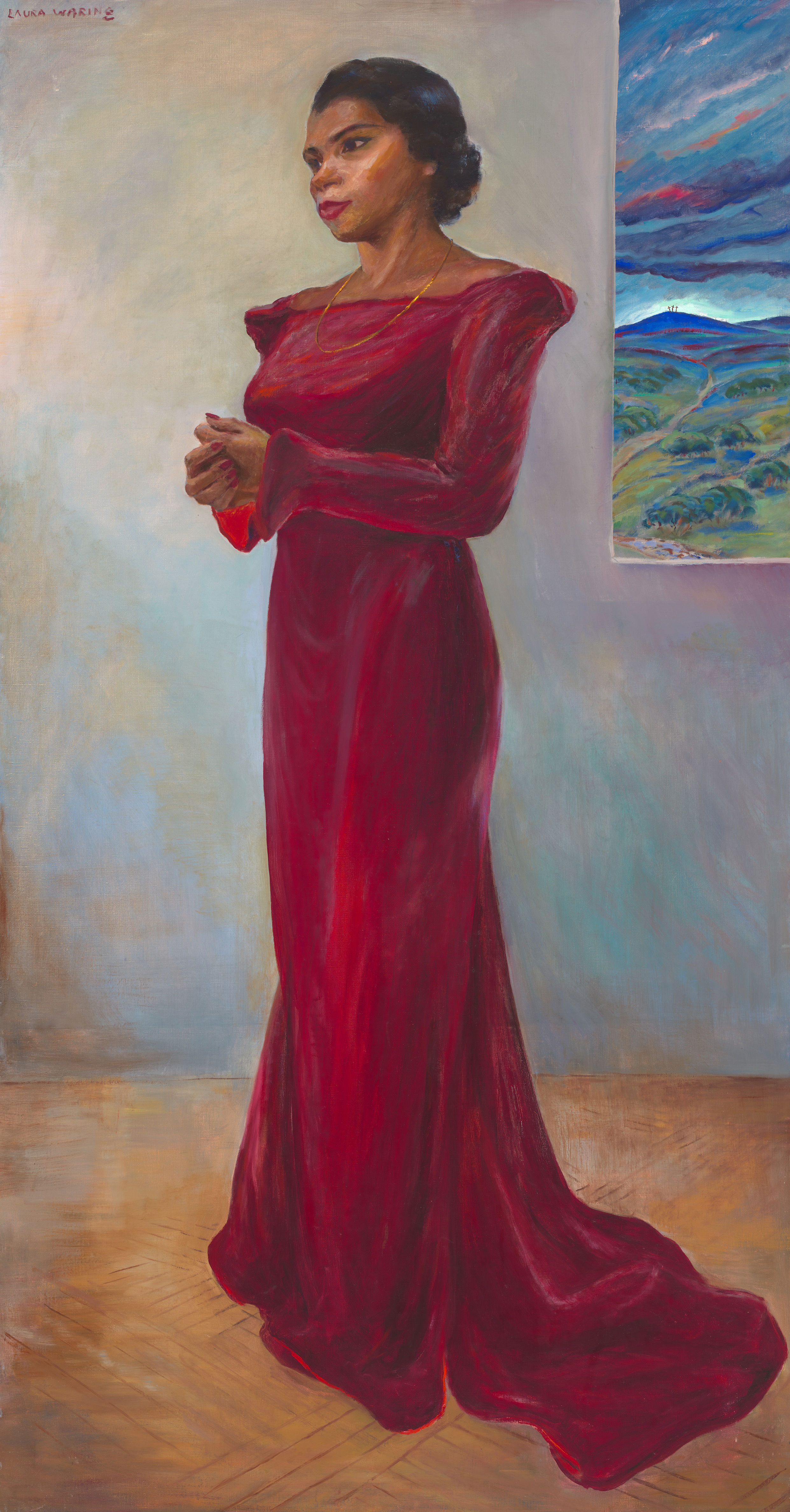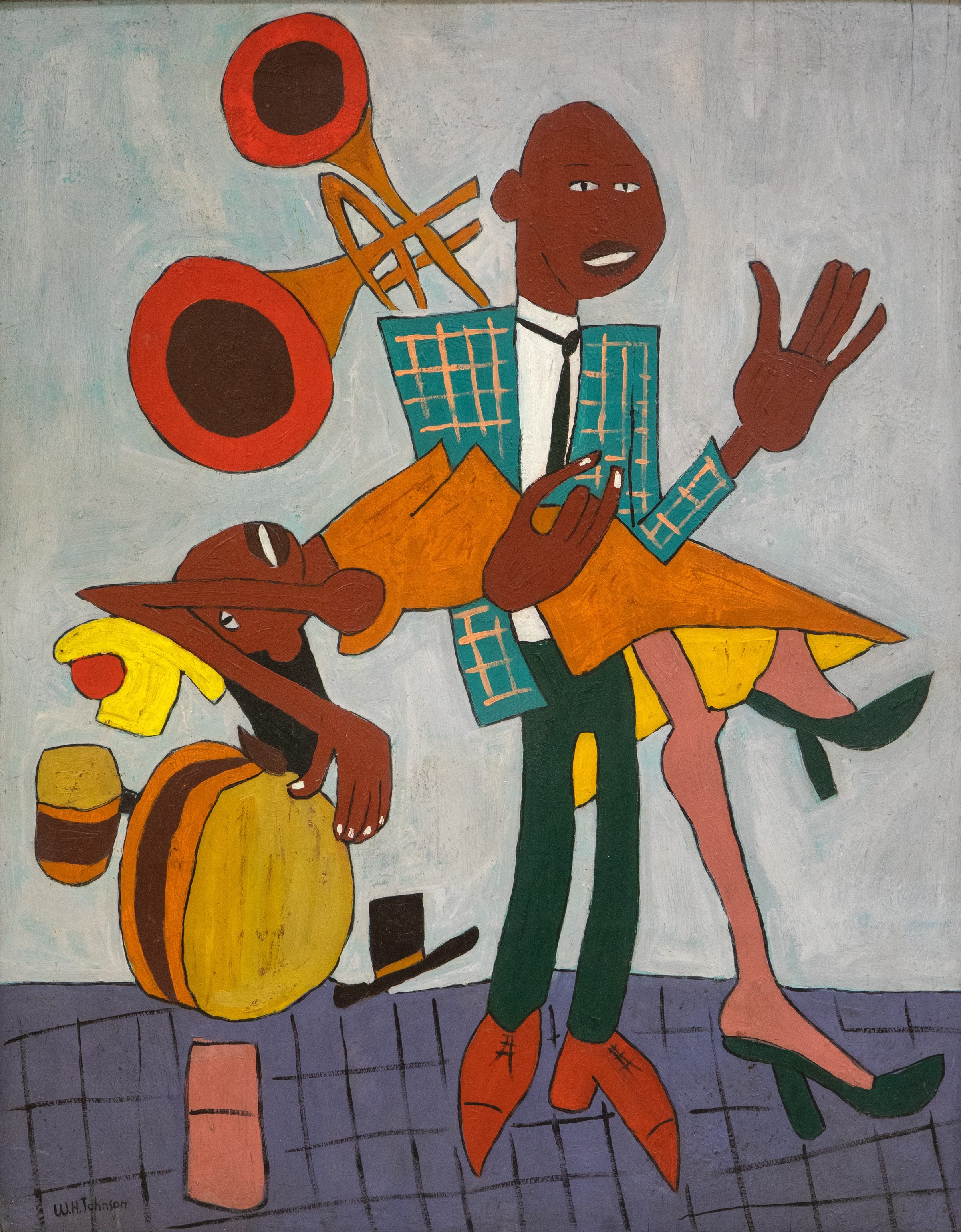
The Met Museum’s ‘Harlem Renaissance and Transatlantic Modernism’
A young couple poses on West 127th Street in Harlem with their shiny new Cadillac. She wears a cloche hat and a slight smile, he offers a cool stare from underneath the capacious brim of a fedora. They are both wearing extravagant ankle-length raccoon coats.
James Van Der Zee’s 1932 photograph, titled “Couple,” is among 160 works of painting, sculpture, photography, film and ephemera in The Metropolitan Museum of Art’s comprehensive exhibit “Harlem Renaissance and Transatlantic Modernism,” opening Feb. 25 and running through July 28.
The exhibit is a comprehensive, and long overdue, chronicle of the ways Black artists interpreted and portrayed everyday life in Harlem from the 1920s to the 1940s, during the early decades of the Great Migration when millions of African Americans left the segregated rural South for New York, Chicago and other cities.
It was the dawn of the Jazz Age with its flapper dress and Zoot suit aesthetic, and as Van Der Zee’s “Couple” makes clear, fashion was an integral element in communicating the prosperity and humanity of Black Americans and countering decades of racist depictions, from newspaper cartoons to minstrel shows and vaudeville theater.
“Fashion, the act of adornment, in this moment in American history were central to creating a new script for Black folks,” says Jessica Lynne, a writer and art critic and host of The Met’s accompanying podcast “Harlem Is Everywhere.”
The dominant narrative in terms of visual depictions and cultural output, adds Lynne, held that Black people were “subservient.”
“They were commonly depicted in clothing that was tattered or clothing that indicated a certain class position or occupation, such as a servant or a sharecropper. So James Van Der Zee’s beautiful photo of this couple in Harlem, dressed to the nines, is very much a presentation of dignity. And many people were unaccustomed to thinking about Black folks in that way,” she says.
“It’s important to also say that, of course, Black folks knew that our dignity was inherent and inevitable and not a thing to be earned. But the gesture, and presentation on a public stage really does rearticulate, especially for non-Black folks, an assertion of dignity. And certainly that was a very radical position to take.”

James Van Der Zee, “Identical Twins,” 1924.
Van Der Zee was the most successful portrait photographer working in Harlem at the time. The Upper Manhattan neighborhood was the center of Black culture and cosmopolitan urbanites flocked to his Guarantee Photo Studio (which he set up with his wife Gaynella Greenlee) in their best clothes. His studio was stocked with elaborate background accoutrements: lush carpets and blankets, intricately carved railings and mantles. His studio, says historian Bridget R Cooks in the episode, became a “theater for self-representation.”
Van Der Zee also made sojourns to homes, schools and churches to document personal milestones, including baptisms and weddings. In all of these encounters, clothes were integral to conveying prosperity, comfort and status.

Laura Wheeling Waring, “Marian Anderson,” 1944.
Garments also were central for painters of the era, especially in the works of Laura Wheeler Waring, Archibald J. Motley Jr., William H. Johnson and Palmer Hayden.
In 1944, Wheeler Waring – who was skilled at depicting the interior lives of her sitters – paints singer and civil rights activist Marian Anderson wearing a vibrant red off-the-shoulder dress with bell sleeves and a train, her nails painted to match her dress, accentuating the contemplative position of her hands.
In “Girl in a Pink Dress (ca. 1927),” the young sitter wears a fussy chiffon dress with a spray of pink and white flowers cascading down her left shoulder, and in “Girl With Pomegranate (ca. 1940),” the sitter’s oversize white cutaway collar is set atop a muted brown dress, as if to direct the viewer’s gaze to her face.
“There is a deep regard and respect for the individual,” says Lynne. “The immense profundity of how seriously they took their sitters, regardless of name, regardless of position, that to me is the real gift here, that many people could find themselves regarded with such beauty and such gravity, and that their lives could be recorded in a manner that was held up, counter to the other kinds of images that were coming through other forms of media in their contemporaneous moment.”
Of course, clothes also were employed symbolically to underscore the continuing inequality pervading the era. Hayden’s “The Dame From Harlem” (ca. 1930) depicts an older woman wearing a blue evening dress and pearls with white stockings and shoes, and seated in her living room with her dog at her feet. But, notes Cooks in the exhibit’s catalogue, “although she has assumed the demeanor of a successful woman and has the traditional attributes of privilege and leisure, she remains bound by the Eurocentric constraints that affected her everyday life, such as her garish light-toned hosiery, which was likely promoted to white consumers as being ‘natural flesh toned’ by manufacturers that did not, at that time, make the product in shades that would have matched the skin tones of Black women.”
These juxtapositions are explored in the “Fashion & Portraiture” installment of the five-episode podcast (available on any podcast streaming service), which features Cooks and Washington Post fashion critic Robin Givhan in conversation with Lynne. The first two episodes drop on Feb. 20, followed by subsequent installments focused on “Art & Literature” (March 5), “Music & Nightlife” (March 12) and “On the Cusp of Civil Rights” (March 19).
A significant portion of the exhibit’s paintings, sculpture and works on paper are on loan from Historically Black Colleges and Universities (HBCUs), including Clark Atlanta University Art Museum, Fisk University Galleries, Hampton University Art Museum and Howard University Gallery of Art. The exhibit comes more than a half century after The Met’s controversial 1969 exhibit “Harlem on My Mind: The Cultural Capital of Black America, 1900–1968,” which drew howls of protest for its preponderance of newspaper clippings and photographs of Black leaders and prominent Harlem residents instead of the work of Black artists. Since then, The Met has significantly expanded its holdings of works by Black artists during the Harlem Renaissance, including paintings by Aaron Douglas, Elizabeth Catlett and Charles Alston. And in 2021, the museum established the James Van Der Zee Archive in partnership with the Studio Museum in Harlem.
“Now our public relationship to community and consumption is quite different,” says Lynne.
The work created by Black artists during the Harlem Renaissance era “are happening as images of death [of Black people] are circulating. White communities are sending postcards of lynchings and mutilated [Black] bodies. And so the juxtaposition of these very tender, thoughtful representations and depictions offer counter consideration. These works do not appear out of nowhere. They live in a constellation of discourse, of attitudes, of expectations. And when you consider that, that’s really when you make sense of the intervention that was being taken up by these artists.”

William Henry Johnson, “Jitterbugs V,” ca. 1941-42.
More from WWD
For more stories like this, follow us on MSN by clicking the button at the top of this page.
News Related-
Russian court extends detention of Wall Street Journal reporter Gershkovich until end of January
-
Russian court extends detention of Wall Street Journal reporter Evan Gershkovich, arrested on espionage charges
-
Israel's economy recovered from previous wars with Hamas, but this one might go longer, hit harder
-
Stock market today: Asian shares mixed ahead of US consumer confidence and price data
-
EXCLUSIVE: ‘Sister Wives' star Christine Brown says her kids' happy marriages inspired her leave Kody Brown
-
NBA fans roast Clippers for losing to Nuggets without Jokic, Murray, Gordon
-
Panthers-Senators brawl ends in 10-minute penalty for all players on ice
-
CNBC Daily Open: Is record Black Friday sales spike a false dawn?
-
Freed Israeli hostage describes deteriorating conditions while being held by Hamas
-
High stakes and glitz mark the vote in Paris for the 2030 World Expo host
-
Biden’s unworkable nursing rule will harm seniors
-
Jalen Hurts: We did what we needed to do when it mattered the most
-
LeBron James takes NBA all-time minutes lead in career-worst loss
-
Vikings' Kevin O'Connell to evaluate Josh Dobbs, path forward at QB
